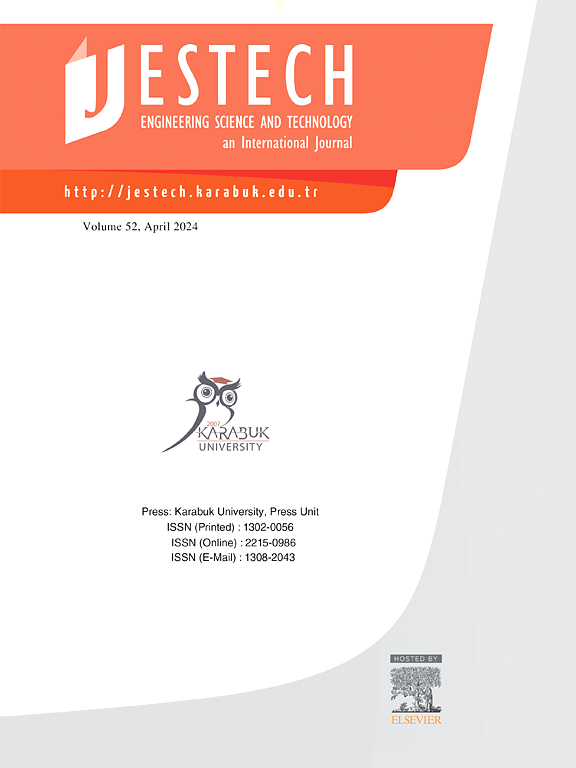Novel distance-fitness learning scheme for ameliorating metaheuristic optimization
IF 5.1
2区 工程技术
Q1 ENGINEERING, MULTIDISCIPLINARY
Engineering Science and Technology-An International Journal-Jestech
Pub Date : 2025-03-28
DOI:10.1016/j.jestch.2025.102053
引用次数: 0
Abstract
An important portion of metaheuristic algorithms is guided by the fittest solution obtained so far. Searching around the fittest solution is beneficial for speeding up convergence, but it is detrimental considering local minima stagnation and premature convergence. A novel distance-fitness learning (DFL) scheme that provides better searchability and greater diversity is proposed to resolve these. The method allows search agents in the population to actively learn from the fittest solution, the worst solution, and an optimum distance-fitness (ODF) candidate. This way, it aims at approaching both the fittest solution and ODF candidate while at the same time moving away from the worst solution. The effectiveness of our proposal is evaluated by integrating it with the reptile search algorithm (RSA), which is an interesting algorithm that is simple to code but suffers from stagnating in local minima, converging too early, and a lack of sufficient global searchability. Empirical results from solving 23 standard benchmark functions, 10 Congresses on Evolutionary Computation (CEC) 2020 test functions, and 2 real-world engineering problems reveal that DFL boosts the capability of RSA significantly. Further, the comparison of DFL-RSA with popular algorithms vividly signifies the potential and superiority of the method over most of the problems in terms of solution precision.
求助全文
约1分钟内获得全文
求助全文
来源期刊

Engineering Science and Technology-An International Journal-Jestech
Materials Science-Electronic, Optical and Magnetic Materials
CiteScore
11.20
自引率
3.50%
发文量
153
审稿时长
22 days
期刊介绍:
Engineering Science and Technology, an International Journal (JESTECH) (formerly Technology), a peer-reviewed quarterly engineering journal, publishes both theoretical and experimental high quality papers of permanent interest, not previously published in journals, in the field of engineering and applied science which aims to promote the theory and practice of technology and engineering. In addition to peer-reviewed original research papers, the Editorial Board welcomes original research reports, state-of-the-art reviews and communications in the broadly defined field of engineering science and technology.
The scope of JESTECH includes a wide spectrum of subjects including:
-Electrical/Electronics and Computer Engineering (Biomedical Engineering and Instrumentation; Coding, Cryptography, and Information Protection; Communications, Networks, Mobile Computing and Distributed Systems; Compilers and Operating Systems; Computer Architecture, Parallel Processing, and Dependability; Computer Vision and Robotics; Control Theory; Electromagnetic Waves, Microwave Techniques and Antennas; Embedded Systems; Integrated Circuits, VLSI Design, Testing, and CAD; Microelectromechanical Systems; Microelectronics, and Electronic Devices and Circuits; Power, Energy and Energy Conversion Systems; Signal, Image, and Speech Processing)
-Mechanical and Civil Engineering (Automotive Technologies; Biomechanics; Construction Materials; Design and Manufacturing; Dynamics and Control; Energy Generation, Utilization, Conversion, and Storage; Fluid Mechanics and Hydraulics; Heat and Mass Transfer; Micro-Nano Sciences; Renewable and Sustainable Energy Technologies; Robotics and Mechatronics; Solid Mechanics and Structure; Thermal Sciences)
-Metallurgical and Materials Engineering (Advanced Materials Science; Biomaterials; Ceramic and Inorgnanic Materials; Electronic-Magnetic Materials; Energy and Environment; Materials Characterizastion; Metallurgy; Polymers and Nanocomposites)
 求助内容:
求助内容: 应助结果提醒方式:
应助结果提醒方式:


